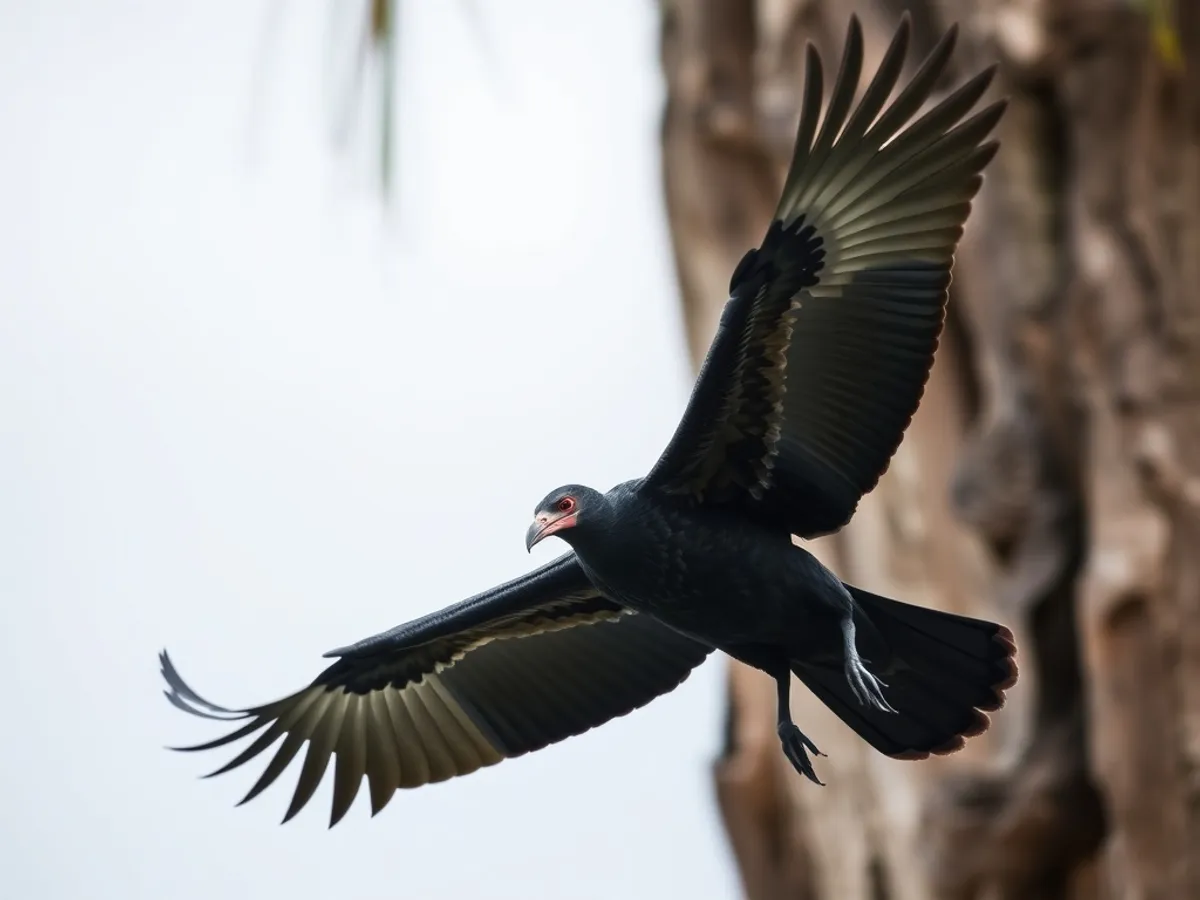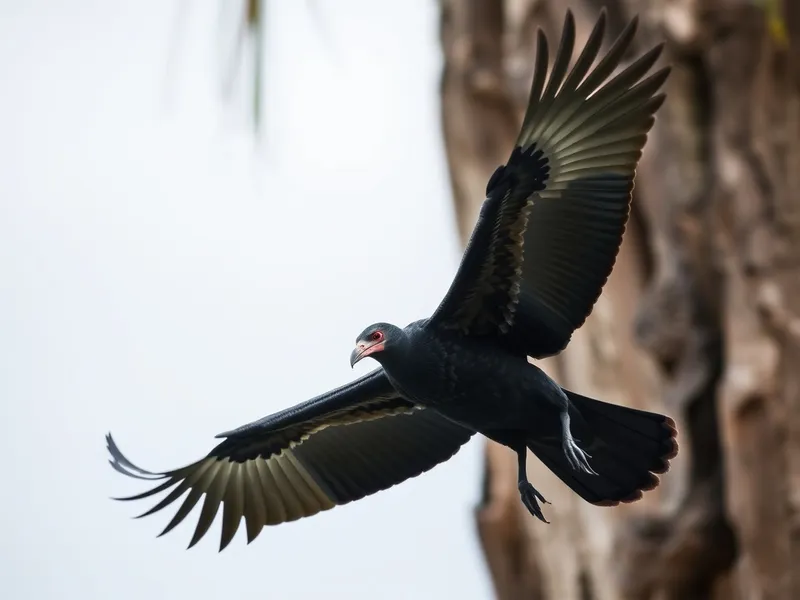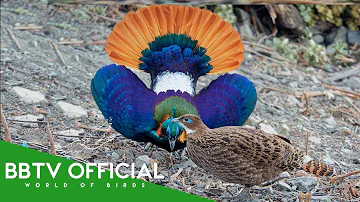
Magnificent Frigatebird
Fregata magnificens

Meet the Magnificent Frigatebird
The Magnificent Frigatebird is a large seabird known for its impressive wingspan, forked tail, and striking sexual dimorphism. Males are recognized by their bright red throat pouch, which they inflate like a balloon during courtship displays to attract females. These birds are expert aerialists, spending most of their lives soaring over tropical and subtropical oceans. Unlike many other seabirds, Magnificent Frigatebirds rarely land on the water due to their non-waterproof feathers and instead snatch prey from the ocean surface or engage in kleptoparasitism, stealing food from other birds.
Classification
Bird
Habitat
Tropical and subtropical coastal areas and islands
Diet
Carnivore
Lifespan
15-30 years
Conservation
Least Concern
Weight
1.1–1.6 kg
📖Fascinating Facts
Massive Wingspan
The Magnificent Frigatebird boasts a wingspan of up to 2.3 meters (7.5 feet), making it one of the largest wing-to-body ratios among birds.
Unique Courtship Display
Males display an inflatable red throat pouch, or gular sac, during the breeding season to attract females.
Oceanic Aerialists
These birds spend most of their lives soaring above the ocean and are rarely seen on land except during breeding.
📋Detailed Description
The Magnificent Frigatebird (Fregata magnificens) is a strikingly large seabird, with males reaching up to 114 cm in length and boasting a wingspan of up to 2.44 meters, making it the largest species in the Fregatidae family. Its body is slender and lightweight, weighing between 1.1 and 1.6 kg, which, combined with its long, angular wings and deeply forked tail, allows for exceptional aerial maneuverability and endurance. Sexual dimorphism is pronounced: adult males are mostly black with an iridescent sheen and possess a vivid red gular sac, which they inflate during courtship. Females are larger, with a white breast and lower neck, and juveniles display a white head and underparts. The bill is long, hooked, and sharply pointed, ideal for snatching prey from the ocean surface. Magnificent Frigatebirds are almost exclusively pelagic outside the breeding season, rarely landing on water due to their non-waterproof plumage. Their skeletal structure is highly adapted for soaring, with a reduced keel and lightweight bones. These birds are renowned for their kleptoparasitic behavior, often harassing other seabirds to steal food mid-air. Socially, they are colonial nesters, gathering in large, noisy breeding colonies on remote islands. Their vocalizations are limited, with males producing drumming and rattling sounds during displays. Lifespan in the wild is estimated to be over 30 years, with delayed sexual maturity and low reproductive rates.
💡 Did you know?
Magnificent Frigatebirds can stay aloft for weeks at a time without landing, sometimes sleeping while gliding in the air.
🔬Research & Sources
Wikipedia Summary
The magnificent frigatebird, frigate petrel or man o' war is a seabird of the frigatebird family Fregatidae. With a length of 89–114 centimetres and wingspan of 2.17–2.44 m, it is the largest species of frigatebird. It occurs over tropical and subtropical waters off America, between northern Mexico and Peru on the Pacific coast and between Florida and southern Brazil along the Atlantic coast. There are also populations on the Galápagos Islands in the Pacific and the Cape Verde islands in the Atlantic. It is one of the fastest birds in the world, flying at speeds of up to 95 miles per hour.
Last Modified: 5/24/2025
🎭Behavior & Social Structure
Magnificent Frigatebirds are diurnal and spend the majority of daylight hours soaring effortlessly on thermals and trade winds, often reaching altitudes of several hundred meters. Their foraging strategy is highly specialized: they snatch flying fish, squid, and other marine prey from the surface without landing, relying on their agility and acute eyesight. Kleptoparasitism is a notable behavior—frigatebirds frequently pursue other seabirds such as boobies, terns, and tropicbirds, forcing them to regurgitate their catch, which the frigatebird then seizes in mid-air. Social interactions are complex during the breeding season, with males displaying in groups to attract females, inflating their gular sacs, vibrating their wings, and calling. Outside breeding, they are more solitary or found in loose aggregations, especially at sea. Roosting occurs in trees or low shrubs on islands, where they are highly gregarious. Daily routines are dictated by wind and weather, with birds traveling vast distances in search of food, sometimes covering hundreds of kilometers in a single day.
👶Reproduction & Life Cycle
Breeding occurs in large colonies on remote islands, primarily during the dry season, though timing varies regionally. Males arrive first and establish display sites, where they inflate their gular sacs and perform elaborate courtship displays to attract females. Once paired, the female lays a single chalky-white egg in a loosely constructed nest of sticks, often built in low shrubs or trees. Both parents share incubation duties, which last approximately 50–60 days. After hatching, the chick is brooded and fed by regurgitation for several months. Fledging occurs at 5–6 months, but juveniles may continue to receive parental care for up to a year, one of the longest dependency periods among birds. Magnificent Frigatebirds exhibit low reproductive rates, typically breeding every other year due to the extended care required for each offspring. Sexual maturity is reached at 5–7 years of age.
🛡️Adaptations & Survival
Magnificent Frigatebirds possess several remarkable adaptations for their pelagic lifestyle. Their long, narrow wings and deeply forked tail provide exceptional lift and maneuverability, enabling sustained soaring with minimal energy expenditure. The absence of waterproofing oils in their plumage prevents them from diving or swimming, but reduces weight and allows for greater flight efficiency. Their hooked bill is specialized for seizing slippery prey and for kleptoparasitism. The highly developed gular sac in males is a unique adaptation for sexual selection, serving as a visual signal during courtship. Physiologically, they have a low metabolic rate and efficient respiratory system, supporting long-distance flight. Their salt glands allow them to excrete excess salt from ingested seawater, a crucial adaptation for marine existence.
📚Research Sources
🎨Cultural Significance
Magnificent Frigatebirds have featured in the folklore and maritime traditions of coastal communities throughout their range. Their dramatic aerial displays and striking appearance have inspired local legends, often symbolizing freedom, cunning, or the power of the sea. In the Galápagos Islands, they are a popular subject for ecotourism and environmental education. The term 'man o' war' reflects their reputation as formidable aerial pirates. While not traditionally hunted or used for food, their presence is sometimes seen as an indicator of healthy marine ecosystems.
🔬Recent Research & Discoveries
Recent research has focused on the species' extraordinary flight capabilities, with GPS tracking revealing non-stop flights of up to two months over open ocean, during which birds sleep while gliding. Studies on kleptoparasitism have illuminated the ecological role of frigatebirds in seabird communities. Genetic analyses have clarified subspecies boundaries and population structure, particularly between Atlantic and Pacific populations. Ongoing research is investigating the impacts of climate change on breeding success and colony stability, as well as the physiological mechanisms underlying their extreme aerial endurance.
🎥Wildlife Videos

Frigatebird Study | PopMech
Short film presenting field work and analyses of frigatebird study. [Credit: Aurelien Prudor / Henri Weimerskirch CEBC CNRS] ...
Popular Mechanics

Birds: Melodies, Feathers, and Flight | Full Wildlife Documentary
Melodious calls, vibrant feathers and the power of flight … uplifting, inspiring qualities bestowed on the multitude of birdlife that ...
Get.factual

30 Most Beautiful Creatures On Earth (Order Galliformes) | Wildlife Documentary | BBTV Official
In the heart of the world's most remote forests and rugged highlands, where mist lingers over ancient trees and the wilderness ...
BBTV Official

Facts: The Magnificent Frigatebird
Quick facts about these expert flyers and thieves! The magnificent frigatebird (Fregata magnificens, man o war bird, pirate birds, ...
Deep Marine Scenes

Sea Birds Battle In The Air For Fish | Life | BBC Earth
Life David Attenborough narrates a breathtaking ten-part blockbuster that brings you 130 incredible stories from the frontiers of the ...
BBC Earth

Magnificent Frigatebirds at Colony
BirdsCaribbean
🌍Habitat Information
The Magnificent Frigatebird typically inhabits Tropical and subtropical coastal areas and islands environments. Magnificent Frigatebirds have adapted to their environments with specialized features and behaviors.
Primary Habitat:
Tropical and subtropical coastal areas and islands
More detailed habitat information will be available soon.
🛡️Conservation Status
The Magnificent Frigatebird is currently classified as Least Concern. Conservation efforts are crucial for preserving this species for future generations.
Common Threats:
- 🏠Habitat loss and fragmentation
- 🌡️Climate change impacts
- 🎯Hunting and poaching
- 🏭Human-wildlife conflict
⚠️Threats & Conservation Challenges
Currently classified as Least Concern by the IUCN, Magnificent Frigatebirds face localized threats including habitat loss from coastal development, human disturbance at breeding colonies, and introduced predators such as rats and cats on nesting islands. Climate change poses emerging risks, with rising sea levels and increased storm frequency threatening low-lying nesting sites. Overfishing and marine pollution may reduce prey availability, indirectly impacting populations. Despite these challenges, the species remains widespread and relatively abundant, with stable global population trends, though some regional declines have been noted.
🔬Scientific Classification
Scientific Name
Fregata magnificens
Classification Hierarchy
🔍 About Taxonomic Classification
Taxonomic classification is a hierarchical system used by scientists to classify and organize living organisms based on shared characteristics and evolutionary relationships.
The system moves from broad categories (Kingdom) to increasingly specific ones, with each animal's scientific name typically consisting of its Genus and species.
📝Community Notes
Share your observations and insights about the Magnificent Frigatebird with our community of wildlife enthusiasts.
Join Our Community
Sign in to share your observations and connect with fellow wildlife enthusiasts.
Sign In to ContributeNo community notes yet
Be the first to share your observations about the Magnificent Frigatebird!
Explore Magnificent Frigatebird
Select a tab above to learn more about this amazing animal.
📸Photo Gallery
No photos available for this animal yet.
🌟Discover More Wildlife
Continue your journey of discovery with more fascinating animals from our database
